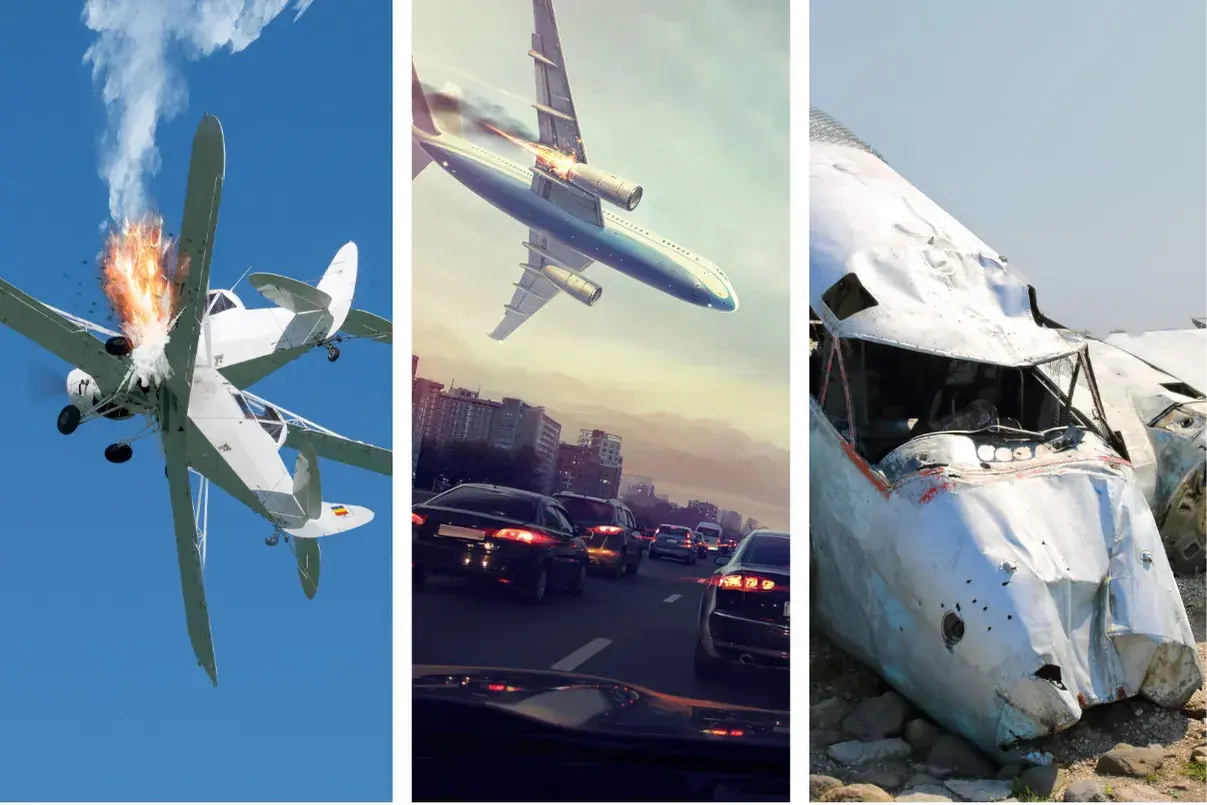Experts attribute this uptick to a combination of human error, unpredictable weather, increasing air traffic, manufacturing flaws, and the added complexities of geopolitical tensions.
Pilot Error: A Leading Cause
Human error remains the primary cause of aviation accidents, responsible for
70%–80% of crashes globally, according to the
IATA. Research by
Panish Shea & Boyle LLP indicates that
80% of crashes are caused by pilot misjudgment, procedural mistakes, or communication failures. The growing reliance on cockpit automation has also led to challenges, as seen in the
Boeing 737 MAX disasters.
Additionally, pilot fatigue—a factor in over
50% of long-haul pilots (
NTSB)—continues to impair decision-making in high-pressure situations, highlighting the need for stricter work-hour regulations.
Weather Challenges: Increasingly Unpredictable Skies
Adverse weather conditions account for
10% of aviation accidents, with climate change introducing more frequent turbulence, sudden wind shear, and unpredictable storms (
Panish Shea & Boyle LLP). A Norwegian Boeing 737-800 overshot the runway in Molde on December 20, 2024, stopping just 15 meters from the sea due to severe weather. Such incidents emphasize the growing need for advanced weather forecasting systems and pilot training for extreme conditions.
Air Traffic Growth: Crowded Skies
Global air traffic has surged, with annual flights projected to exceed
40 million by 2030 (
ICAO), marking a
25% increase from 2020. This growth has led to busier skies and increased risks in congested airspaces and airports. In 2024, the U.S. recorded
1,250 near-miss incidents, a
20% rise from 2023 (
FAA).
Manufacturing Lapses and Oversight Failures
Manufacturing flaws are responsible for
8% of aviation accidents (according to
Aviation Week). Boeing’s ongoing issues, including the grounding of South Korea’s 737 fleet in 2024 due to structural flaws, have drawn attention to systemic lapses. This becomes increasingly concerning considering recent whistleblower allegations that
30% of aviation manufacturing employees feel pressured to prioritize speed over safety (Reuters). The FAA, facing criticism for certifying flawed designs like the 737 MAX’s MCAS system, has vowed to improve oversight, but such changes often come too late.
World Tensions and Their Impact on Aviation
Geopolitical conflicts are adding another layer of complexity to aviation safety. Over
20% of international flights now require rerouting to avoid conflict zones (
FlightGlobal). The Azerbaijani cargo plane shot down in Somalia and the Lebanese airplane forced to divert over restricted airspace highlight how geopolitical tensions restrict safe routing options. These limitations force flights into unfamiliar or congested skies, raising the chances of emergencies or accidents.
Recent Incidents
In addition to the Azerbaijani and South Korean crashes, several other incidents in late 2024 have drawn attention:
- October 14, 2024: A Cessna Citation crashed near Marseilles due to engine failure, killing all five onboard.
- November 3, 2024: A mid-air collision near Tampa involving two small planes resulted in four fatalities.
- December 20, 2024: A Norwegian Boeing 737-800 overshot the runway in Molde, narrowly avoiding the sea.
- December 25, 2024: A small propeller plane crashed onto a Texas highway, injuring four people.
- January 2, 2025: A small plane collided with a Southern California warehouse, leaving 18 injured.
Conclusion
The recent surge in aviation incidents reflects a multifaceted challenge driven by human error, environmental factors, manufacturing lapses, and geopolitical tensions. As air travel expands, addressing these vulnerabilities will require collaboration among airli
IATAnes, manufacturers, regulators, and pilots. Transparency, stricter safety protocols, and innovative solutions are essential to ensuring that air travel remains safe despite the growing complexities of the modern aviation landscape.


